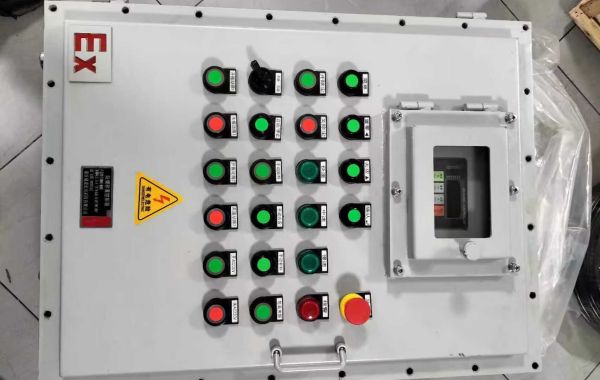To mitigate these risks, explosion-proof control cabinets are essential.
Understanding Explosion Proof Control Cabinets
Explosion-proof control cabinets are designed to contain any internal explosion, preventing ignition of the surrounding atmosphere. They are constructed using specific materials and engineering principles to ensure maximum safety.
Key features of explosion-proof control cabinets:
Robust construction: Built to withstand high pressure and temperature during an internal explosion.
Flameproof enclosures: Prevent the ignition of external flammable gases or vapors.
Ingress protection: Sealed to prevent the entry of dust, water, and other contaminants.
Hazardous location rating: Certified for specific hazardous areas based on the type of atmosphere.
The Importance of Explosion Proof Control Cabinets in the Food and Beverage Industry
Safety: Protect employees, equipment, and facilities from explosions and fires.
Compliance: Adhere to industry regulations and standards for hazardous areas.
Reliability: Ensure uninterrupted operations by preventing equipment damage.
Risk mitigation: Reduce the likelihood of costly downtime and production losses.
Common Applications in the Food and Beverage Industry
Processing areas: Handling flammable liquids, gases, or dust.
Storage facilities: Storing flammable materials or operating in hazardous environments.
Mixing and blending operations: Involving volatile substances.
Dust collection systems: Handling combustible dust.
Selecting the Right Explosion Proof Control Cabinet
Choosing the appropriate explosion-proof control cabinet requires careful consideration of several factors:
Hazardous area classification: Determine the specific hazardous location based on the type of atmosphere.
Equipment requirements: Identify the electrical components and devices to be housed in the cabinet.
Environmental conditions: Consider factors such as temperature, humidity, and corrosion.
Cabinet size and configuration: Select a cabinet that adequately accommodates the equipment while providing sufficient space for ventilation.
Certification and compliance: Ensure the cabinet meets relevant industry standards and regulations.
Maintenance and Inspection
Regular inspection and maintenance are crucial for maintaining the integrity of explosion-proof control cabinets:
Visual inspection: Check for signs of damage, corrosion, or wear.
Internal inspection: Examine electrical components and wiring for any issues.
Gasket inspection: Ensure gaskets are in good condition to maintain sealing integrity.
Cleaning: Remove dust and debris to prevent overheating.
Calibration: Verify the performance of safety devices and instruments.
By investing in high-quality explosion-proof control cabinets and implementing a robust maintenance program, the food and beverage industry can significantly enhance safety and reliability while complying with industry regulations.
Would you like to know more about specific types of explosion-proof control cabinets or discuss case studies?








